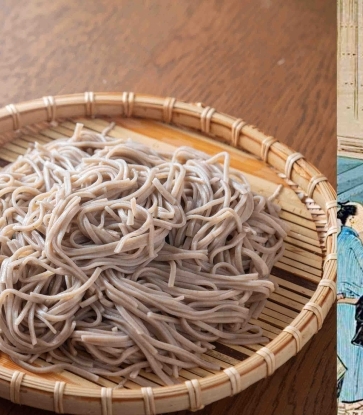But he is faced with a dilemma: to find the right sauce for the fish. Traditionally, sashimi is served with sashimi shouyu, a sauce prepared with usuguchi soy sauce (a less intense version of soy sauce), katsuobushi (dried and fermented tuna), seaweed, sake and dashi, which is fermented for two weeks. It is traditional and Seki knows the preparation process will impress his guests, but its flavours are too overpowering for the delicate dish.

Thus begins his process of searching for the right pairing. He then tries yuzu kosho (salt with yuzu), ponzu (a citrus-based sauce), and simply salt for the fish. None of it is good enough to delight him. After repeated testings for two weeks, what he finally decided to use is the usuguchi soy sauce - no cooking, no mixing, just usuguchi soy sauce itself. Nothing can be more simple, but with it, the umami flavour of
the fish becomes pronounced, without masking the elegant wood scent. It is perfect for the fish.
The great skill to strip away the complexities and reach a recipe that addresses to the ingredient’s core beauty is finesse.
“Sometimes complicated techniques are not the best. Finesse is to choose only the necessary,” Seki says.
It takes almost two decades for Seki to reach to this level of precision. He cut his teeth in Japanese cooking from the age of 18 in a famous Japanese Kaiseki restaurant, where he met and trained together with the now owner and executive chef of Nihonryori RyuGin, Chef Seiji Yamamoto. He was taught to be highly precise - and it all started from the painful rite of passage of how to hold your knives and cut properly.
“Japanese hocho (knives) are designed to achieve high sharpness and precision. Opposed to the double-edge knives from other cuisines, Japanese hocho is single-edge, so if you don’t know how to use it, you cannot even cut a straight line. It is important, therefore, for us to know 'the form' of using hocho effectively.”

The training was tough. The master would demonstrate the form once, and Seki would need to practice on his own. This required him to coordinate his whole body - from which fingers to hold the hocho handle, the angle to raise the wrist, the position to place the right and left legs, to how much to lean your body towards the cutting board. All this comes together to make or break the result.
The pose was very unnatural to a human body, Seki says, and every inch of his body ached. This was why he needed to keep practising to attune himself to the position. He even went through what he called “image training” where he closed his eyes and visualised how to pull the knife when he’s at home or travelling.
“This is essential because if you are not able to cut the fish with the right move, the fish will lose its juice and affect the experience,” Seki explains when asked if he ever doubted the need for training.
In the first few years of his culinary career, Seki focused on finishing his tasks as effectively and precisely as possible. He was then promoted to head a section where he had to process different ingredients properly according to their conditions and characteristics. The job required him to “read” the ingredients and decide which technique to use to prepare them.

In 2003, he was invited by Chef Seiji Yamamoto to join the crew at Nihonryori RyuGin, and in 2012 he relocated to Hong Kong to be the sous chef at Tenku Ryugin. He was later appointed chef de cuisine in 2015.
At that point, he was aching to create new dishes and tried to reinvent the existing items at Ryugin. Those attempts were not fruitful.
“When I thought about it, I realised the original recipes were already the best - they were complete. Every step, every ingredient, had been streamlined over numerous trials. Everything in the dish was necessary, and all other things were unnecessary. This was my lesson.” Seki says.
Now, his goal is to create his own recipe of streamlined necessity, such as the sakura salmon with usuguchi soy sauce that’s serving in the current tasting menu. In the kitchen, he also practises finesse in many areas. For example, he always tastes and seasons his dashi (Japanese stock) with the same bowl that the guests use in the restaurant.

“We taste saltiness with throat, umami with tongue and nose for aroma. If I use a spoon to taste the soup, I am not having the same sensory journey that guests would have. The taste is not precise and my seasoning will be wrong. You need a wine glass to enjoy wine. To me, the bowl is the wine glass for dashi.”
Strong desire, perseverance and good health are considered by Seki the most important qualities for chefs to achieve finesse.
“I don’t think I have achieved finesse. I use my best level of skills in the kitchen and at the same time I keep learning new things. I am always in the quest for the better.”























